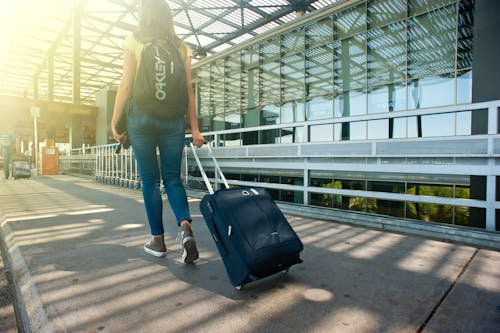Airlines have limited liability for lost or damaged baggage under international law. The Montreal Convention caps compensation at about SDR 1,131 (around €1,300–1,700) per passenger (flightright.com). In practice this means an airline will reimburse up to roughly $1,750 worth of personal items in checked luggage, regardless of how many bags were lost. Many travelers find this insufficient for expensive gear. Hence financial institutions and insurance products play a key role in baggage compensation.
- Travel Insurance: Numerous global travel-insurance plans specifically cover baggage delay, loss, and theft. For instance, market analysts note that “70% of travel insurance policies include baggage coverage,” reflecting its importance (globalgrowthinsights.com). These policies typically reimburse the cost of essential items if your bags are delayed (often a few hundred dollars) and cover the value of lost items up to policy limits. The travel insurance market was roughly USD 27 billion in 2024 (grandviewresearch.com), in part driven by need for baggage protection. Some insurers offer add-ons (e.g. “baggage protection” riders) or standalone products (baggage-only insurance). In markets like Canada and Europe, popular insurers (Allianz, AXA, Travel Guard, etc.) report that baggage claims make up a significant share of payouts. The ease of filing online claims has improved consumer uptake.
- Credit Card Benefits: Premium credit cards and bank-issued cards often include complimentary travel insurance that covers luggage. For example, certain Mastercard World Elite or Visa Signature cards offer up to USD 3,000 reimbursement for lost checked baggage, and around USD 600 for delayed baggage (caribbean.mastercard.com). American Express cardholders may have similar benefits (often up to $1,000–$1,500 per person). These benefits usually only apply if the airfare or baggage fees are paid with the card. Customers should check their card’s “Global Assist” or insurance clauses. Such coverage often exceeds the Montreal Convention limits, making it valuable for high-ticket items.
- Banking Industry Role: Some banks partner with insurers to bundle travel protections. For example, a bank might include travel and baggage insurance on its premium travel-credit cards. Other financial institutions facilitate claims: banks in some countries allow customers to dispute airline charges or seek refunds through chargebacks if baggage service was not as promised. Moreover, travel insurance products can be distributed by banks (as they do in Europe), meaning banks indirectly fuel the insurance coverage of baggage. In developing markets, local banks sometimes offer travel insurance as part of wealth-management services, acknowledging that more customers are flying internationally and need baggage cover.
- Case Study – Statutory vs. Insurance Compensation: If baggage is lost or delayed, the baseline legal recourse is the airline’s liability (up to ~€1,300) (europa.eu). Additional compensation often comes from secondary sources. For example, suppose a passenger’s camera gear worth $5,000 is stolen from checked luggage. The airline would cover only about $1,750 under Montreal rules (flightright.com). If the traveler had travel insurance or a credit-card plan covering the excess, that insurer would pay the remaining value (subject to deductibles). Surveys suggest roughly 60% of frequent flyers buy such add-ons (globalgrowthinsights.com). Insurers also sometimes cover items that airlines exclude (like jewelry or sports equipment beyond basic cover).
- Market Trends: The global airline baggage mishandling numbers help explain this financial demand. In 2022 alone, an estimated 10 million bags were mishandled worldwide (internationalairportreview.com). This volume fuels a market: one report estimated the “baggage insurance” market (including ancillary products and services) is a growing niche, with billions of dollars of coverage active. Credit card companies similarly see value – baggage protection is a selling point for premium cards. In response, some airlines have even introduced optional baggage insurance add-ons at booking (e.g. a $25 extra fee that covers you beyond the liability limit) (globalgrowthinsights.com), acknowledging that passengers want comfort beyond the minimal statutory compensation.
In summary, while airlines provide a baseline guarantee for lost baggage, much of the real compensation often comes via travel insurers or credit-card plans. Financial institutions thus underwrite the bulk of baggage loss costs: insurers pay claims on delays/theft, and banks/card issuers cover excess losses. Passengers are advised to verify these benefits: for instance, one Mastercard benefits guide specifies “Lost Luggage up to US$3,000” reimbursement (caribbean.mastercard.com). By combining airline liability with insurance cover, travelers can almost fully protect their belongings when flying.


